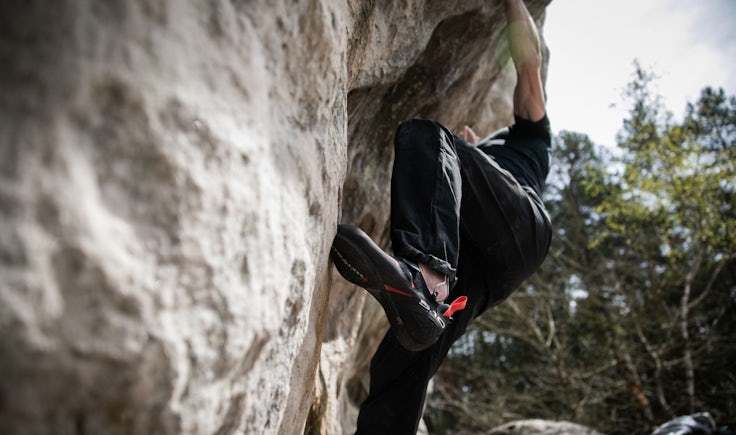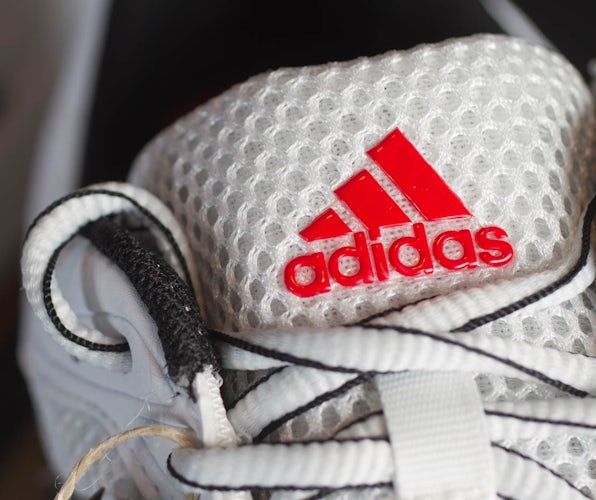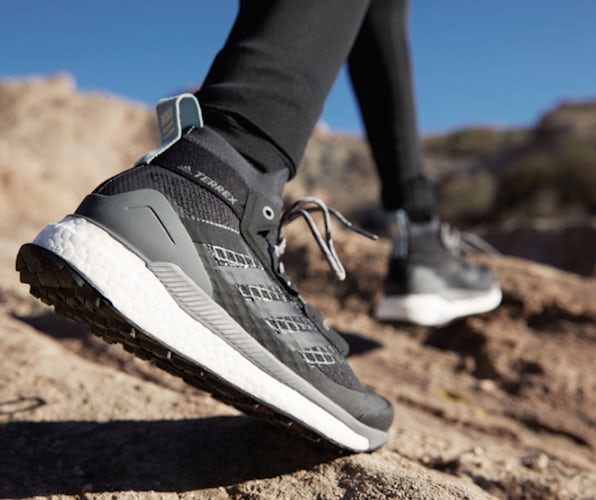How Adidas is using creative narratives to build brand equity
Adidas’ outdoor division is drawing on the expertise of its wider athletic business while at the same time flexing its creative muscle in an attempt to demonstrate the direction it can take the global brand.

It might make up a small proportion of the sportswear giant, but Adidas Outdoor is looking to indicate the direction it can take the of the company by using creativity to build brand equity and engage with consumers’ hearts and heads.
However, speaking to Marketing Week, head of global brand marketing for Adidas Outdoor, Stuart Wells, is realistic in acknowledging that creative alone can’t drive success.
“I’m always the putting pressure on, to see what we can do to better creativity. If you do great creative, it doesn’t mean you don’t need to put media behind, but it means you’re much more likely to engage with people’s hearts as well as their heads,” he says.
“If you can hit people in their hearts, that’s when you start to build brand equity.”
Wells believes that being a small part of the wider Adidas business gives it the licence to do things different and disruptively, while still being on-brand.
“We’re always thinking about: ‘What can we do that is going to be brave and that’s going to be strategically correct?’. But we’re also thinking about narratives that really hit home and connect with people,” he says.
It’s important we don’t just think about the Olympics but about the narrative for our campaign over the course of the year and how does the Olympics fit into that narrative and vice versa.
Stuart Wells, Adidas
“We want to be really clear about what we’re doing and why we’re doing it.”
There’s little indication that Adidas Outdoor is interested in following industry norms. For instance, despite only entering the market in 2011, the brand is already proven it is eager to do things differently, and the launch of its hiking boot in February this year is a clear indication of that.
The new boot is designed to challenge the notion that the outdoor industry is “stale and old”. The company is also looking to exploit a gap in the market by targeting a “younger minded consumer” by offering stylish products, but its vital the technical importance of outerwear does not fall by the wayside.
“In the individuals and agencies we work with we are looking for people who can bring a very stylish and contemporary look to the creative but the message is always rooted in technical. We’ve always got an eye on the technical story we’re telling but we need to make sure it looks fantastic,” he says.
“We’ve been looking at different categories about how you get that balance between tech and style, or the functional verse emotional. You can talk tech but you have to show style.”
In terms of how Adidas Outdoor measures the success of its creative campaigns and new product launches, while sales are important, it is equally essential that it builds awareness of its presence in the outdoor sector.
“Awareness engagement is a classic measure for us and also advocacy. We’ve got a clear view of where we stand at the moment and we’re working with our agencies to understand where we are at in terms of awareness and engagement,” Wells says.
“The exciting thing for me is, we are just at the beginning of this. We are building all the time and we’re growing but yet I feel like there’s so many miles ahead of us that we can take advantage of.”
The road to the Tokyo Olympics
Adidas Outdoor is also using the expertise of its athletic business to help conquer the category.
Tim Janaway, the general manager or Adidas Outdoor, says one of the major benefits of being part of the Adidas business is that it is able to take learnings and assets from other areas of the company. As an example, he points to innovations such as shoes made from ocean plastic, known as parley.
“We have a huge R&D investment that not many brands can compete with,” he says.

“We are very lucky, because there’s a hell of a pipeline of innovations we can take from the bigger brands. A lot of outdoor brands don’t have the bandwidth and R&D to do it.”
Janaway has worked across a number of Olympic events with the Adidas team, but Tokyo 2020 offers a new opportunity for the brand. Next year, climbing will make its Olympic debut across three disciplines and given Adidas Outdoor offers a range of climbing gear it provides an even bigger opportunity for the outdoor department “to find synergies cross the organisation”.
While individual sports will have their own marketing messages, Wells says it is important Adidas has a consistent message that runs through all its Olympic activity.
“Whichever sport we enter in the Olympics space, we have to make sure there’s a cohesive thread that runs through it. We are working as a combined team on that. As a company, customer centricity is really important,” he says.
We are very lucky because there’s a hell of a pipeline of innovations we can take from the bigger brands.
Tim Janaway, Adidas
While Wells and Janaway remain tight-lipped regarding marketing plans for Tokyo, supporting climbers by telling their stories in the lead-up to the Olympics will form a key part of the strategy.
“As far as showcasing these athletes, the obvious thing is looking at bringing them into communications not just in one moment in the middle of the year but we also need to consider how to bring that in and weave it into our narrative,” Wells explains.
“It’s important we don’t just think about the Olympics but [instead we need to think about] the narrative for our campaign over the course of the year; how does the Olympics fit into that narrative and how does that narrative have to deviate to accommodate the Olympics?” he asks.
“It’s all about the way we are able to do things like building hype through our statement teams, it’s the way we can create products that resonate strongly. Applying that principle and taking it into an Olympic activation, it makes sense it’s joined up.”






